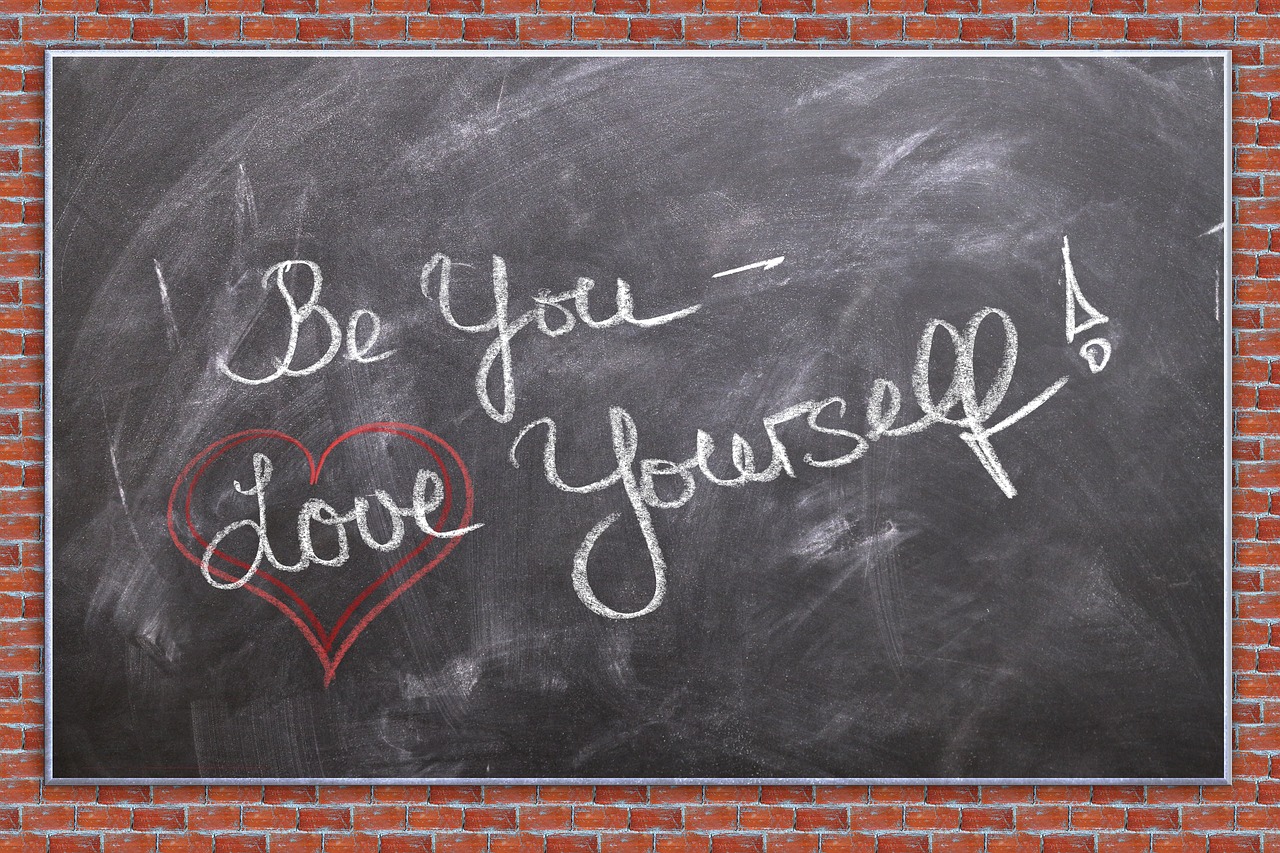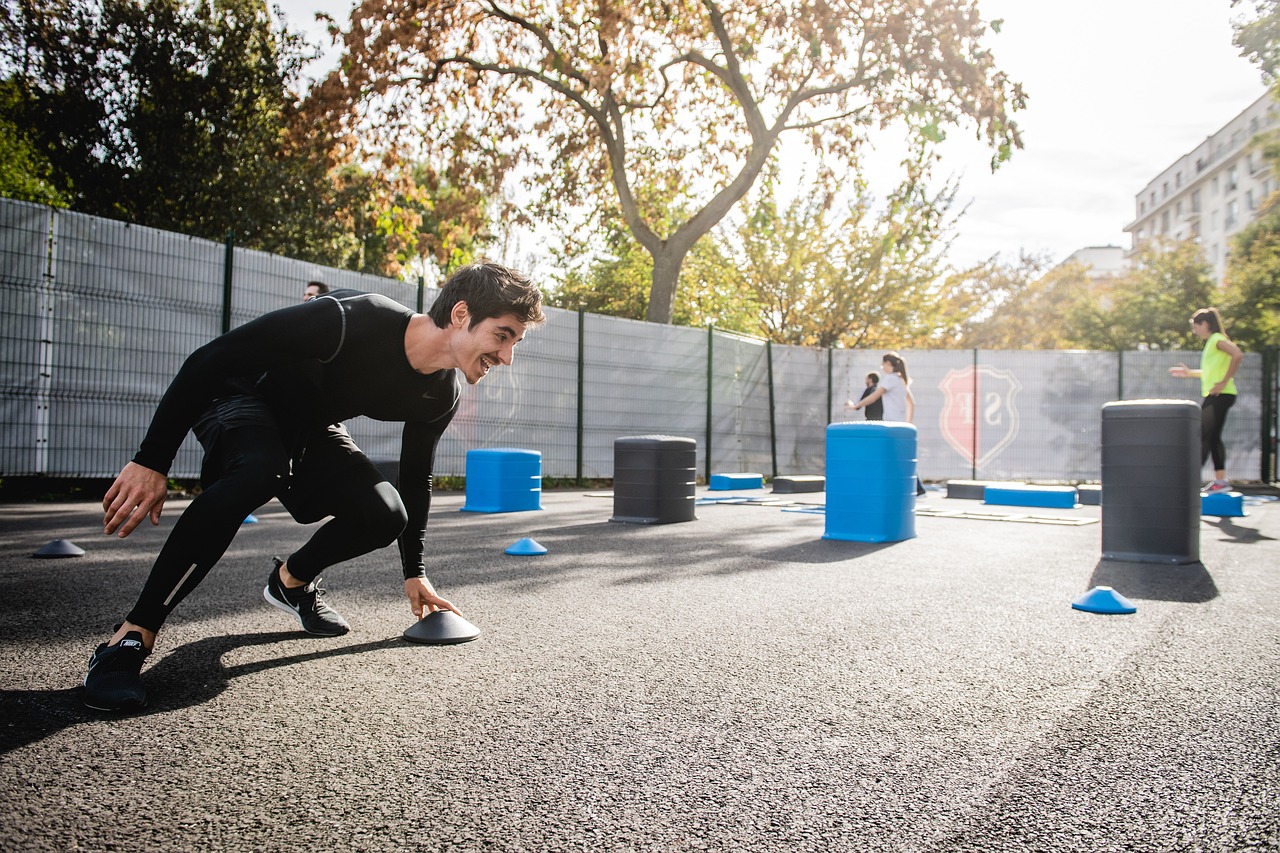Best Self-Defense Techniques to Use in a Home Invasion
This article explores effective self-defense techniques that can be employed during a home invasion, providing insights on preparation, strategies, and tools to enhance personal safety in critical situations.
Home invasions can be terrifying experiences. They often stem from a variety of motivations, including theft, violence, or even personal vendettas. Understanding these motivations can help you formulate effective defense strategies. For instance, many intruders are opportunistic; they look for easy targets. By recognizing the common traits of homes that are frequently invaded, you can take proactive steps to protect yourself. Think of your home as a fortress. The more secure you make it, the less appealing it becomes to potential intruders.
Being prepared is crucial for self-defense. Situational awareness is your first line of defense. It’s about being aware of your surroundings and recognizing potential threats before they escalate. For example, if you notice a stranger lingering around your neighborhood, it’s wise to keep an eye on them and inform your neighbors. Proactive measures can deter potential intruders before an invasion occurs. Just like a good chess player anticipates their opponent's moves, you should always be a few steps ahead of any potential threat.
A safe home environment can significantly reduce the risk of invasion. Simple changes can make a world of difference. Start by securing doors and windows with high-quality locks. Consider adding deadbolts and reinforcing door frames. Here are a few tips:
- Install motion-sensor lights around your property.
- Keep bushes and trees trimmed to eliminate hiding spots.
- Use window security film to make glass harder to break.
These small adjustments can create a formidable barrier against intruders, making your home less attractive to potential threats.
Modern security systems can provide peace of mind. With a variety of options available, from basic alarms to advanced smart home systems, you can find a solution that fits your needs. Some systems even offer remote monitoring, allowing you to keep an eye on your home while you’re away. The effectiveness of these systems in preventing home invasions is well-documented. In fact, homes with security systems are significantly less likely to be targeted. Think of it as having a silent guardian watching over your home.
Community vigilance can be a powerful deterrent. Participating in or establishing a neighborhood watch program can enhance local safety. These programs foster a sense of community and encourage residents to look out for one another. They can be as simple as regular meetings to discuss safety concerns or organizing patrols in your neighborhood. By working together, you create an environment where crime is less likely to thrive. Just like a flock of birds, there’s strength in numbers; intruders are often deterred by the presence of vigilant neighbors.
Knowing how to defend oneself is vital during an invasion. Self-defense techniques can range from physical maneuvers to psychological tactics. For instance, if confronted by an intruder, maintaining a calm demeanor can sometimes diffuse a tense situation. However, if physical confrontation becomes necessary, techniques such as striking vulnerable areas (eyes, throat, groin) can be effective. Remember, the goal is not to engage in a fight but to create an opportunity to escape. Your home is your sanctuary; it’s essential to protect it with every tool at your disposal.
In a pinch, everyday items can serve as effective self-defense tools. Think about it: your kitchen is filled with potential weapons. A sturdy frying pan can be a great tool for defense, while a broom can help keep an intruder at bay. In moments of panic, improvisation can be key. Here’s a few common household objects that can be turned into self-defense tools:
- Kitchen knives for cutting or stabbing.
- Flashlights to temporarily blind an intruder.
- Chairs to block doorways or create distance.
The key is to remain calm and think creatively about how to use what you have at hand. Your home is filled with resources; it’s all about using them wisely.
Improvisation can be key during a home invasion. For instance, if you’re in the kitchen and an intruder enters, a rolling pin can be a surprising weapon. Similarly, if you’re in the living room, grab a lamp or a heavy book. These items can give you the edge you need to escape. Remember, the goal is to create a distraction or a barrier, allowing you to get to safety. It’s about using your environment to your advantage.
Regular practice can improve self-defense skills. Consider enrolling in a self-defense class or participating in workshops. These sessions can provide you with hands-on experience and boost your confidence in real-life situations. Just like any other skill, the more you practice, the better you become. Think of it as training for a marathon; you wouldn’t just show up on race day without preparation. Consistent practice can make all the difference when it comes to defending yourself and your home.
Q: What should I do if I hear someone breaking into my home?
A: Stay quiet and call the police immediately. If you can safely escape, do so. Otherwise, find a secure location to hide until help arrives.
Q: Are there specific self-defense techniques I should learn?
A: Techniques that target vulnerable areas like the eyes, throat, and groin are effective. Additionally, learning how to use your surroundings to your advantage is crucial.
Q: How can I make my home less attractive to intruders?
A: Secure your doors and windows, install motion-sensor lights, and consider a security system. Being part of a neighborhood watch can also deter potential threats.

Understanding Home Invasions
Home invasions can be terrifying experiences that shake the very foundation of our sense of security. Imagine coming home after a long day, only to find that someone has violated your sanctuary. The motivations behind these crimes can vary significantly, but understanding them is crucial in formulating effective defense strategies. Intruders may be driven by desperation, seeking valuables, or even a misguided sense of power. It’s essential to recognize that home invasions often happen in the blink of an eye, and the element of surprise can be their greatest ally.
One of the most alarming facts is that many home invasions are not random acts; they are often premeditated. Intruders may scout neighborhoods, looking for signs of vulnerability, such as unkempt lawns, piled-up mail, or even the absence of cars in the driveway. By understanding their tactics, you can take proactive measures to safeguard your home. For instance, consider how a predator observes its prey. They look for weaknesses, and so should you. This awareness can transform you from a potential victim into a vigilant protector of your home.
Furthermore, it’s important to note that the psychological impact of a home invasion can linger long after the physical threat has passed. Victims often experience feelings of violation, fear, and anxiety. This is why having a solid understanding of home invasions not only prepares you for the worst-case scenario but also helps you reclaim your peace of mind. Here are some common motivations behind home invasions:
- Financial Gain: Many intruders are looking for quick cash or valuables that can be easily sold.
- Drugs: Substance abuse can drive individuals to desperate measures, including home invasions.
- Thrill-Seeking: Some criminals may invade homes simply for the adrenaline rush.
- Targeted Attacks: In some cases, intruders may have a specific target, such as a former partner or someone they believe has something valuable.
By understanding these motivations, you can better prepare yourself and your home. For example, if you know that financial gain is a common motive, you might reconsider how you display valuables or even consider using a safe. Remember, knowledge is power, and when it comes to home invasions, being informed can significantly enhance your ability to defend yourself and your loved ones.

Preparation and Awareness
Being prepared is crucial for self-defense, especially when it comes to protecting your home. Imagine walking into your house after a long day, feeling safe and secure, only to realize that you might not be as protected as you thought. This unsettling thought is what makes preparation and awareness not just important, but essential. The first step in enhancing your safety is to develop a keen sense of situational awareness. This means being aware of your surroundings and recognizing potential threats before they escalate into dangerous situations.
How often do you take a moment to observe your neighborhood? Are the streetlights working? Do you notice unfamiliar faces lingering around? These observations can be critical. By being vigilant and aware of your environment, you can identify suspicious activities and take proactive measures to avoid becoming a victim. Consider this: if you notice a car parked outside your home for an extended period with no one inside, it might be worth investigating further or reporting it to local authorities.
In addition to situational awareness, there are several proactive measures you can take to deter potential intruders. Here are a few effective strategies:
- Always lock your doors and windows, even when you’re at home.
- Install motion sensor lights around your property to illuminate dark areas.
- Keep bushes and trees trimmed to eliminate hiding spots for intruders.
- Consider using security cameras to monitor your property and deter criminal activity.
Creating a safe environment goes beyond just physical barriers; it also involves cultivating a mindset of safety. This means regularly reviewing your home security measures and making adjustments as necessary. For instance, if you’ve recently had a break-in in your area, it might be time to enhance your security systems or even engage with your neighbors about forming a community watch.
A safe home environment can significantly reduce the risk of invasion. Think of your home as a fortress; every door, window, and entry point should be fortified to keep unwanted guests out. Simple measures, such as installing deadbolts, reinforcing door frames, and using window locks, can make a world of difference. Additionally, consider investing in security film for your windows, which can prevent them from shattering easily, further protecting your home from intruders.
Modern security systems can provide peace of mind and serve as a strong deterrent against home invasions. From alarm systems that alert you and authorities to surveillance cameras that capture evidence, the technology available today is impressive. When choosing a security system, look for options that offer:
| Feature | Benefit |
|---|---|
| 24/7 Monitoring | Constant surveillance and immediate response to threats. |
| Mobile Alerts | Receive notifications on your phone for any suspicious activity. |
| Smart Home Integration | Control your security system remotely through smart devices. |
Community vigilance can be a powerful deterrent. Participating in or establishing a neighborhood watch program fosters a sense of unity and responsibility among residents. When neighbors look out for each other, it creates an environment where crime is less likely to occur. Not only does this enhance local safety, but it also builds relationships within the community. After all, there’s strength in numbers!
In conclusion, preparation and awareness are your best allies in preventing home invasions. By being proactive, creating a secure environment, and engaging with your community, you can significantly enhance your safety and the safety of those around you. Remember, it’s better to be prepared and never need it than to need it and not be prepared!

Creating a Safe Environment
Creating a safe environment in your home is not just about having a locked door; it’s about fostering a sense of security that permeates every corner of your living space. Imagine your home as a fortress, where every window and door acts as a protective barrier against potential threats. By taking proactive measures to enhance your home’s security, you can significantly decrease the likelihood of a home invasion.
First and foremost, start with the basics: doors and windows. Ensure that all entry points are equipped with sturdy locks. Deadbolts are a must, as they provide an extra layer of protection that standard locks simply can’t match. Additionally, consider investing in reinforced doors made from solid wood or metal. Windows should also be a priority; consider using window locks and security film to prevent easy access. If you have sliding doors, a wooden dowel or a security bar can be an effective deterrent against forced entry.
Furthermore, the exterior of your home plays a crucial role in your overall safety. Keep your yard well-lit and free of overgrown shrubs that could provide cover for intruders. Motion-sensor lights can be particularly effective, as they illuminate dark areas when movement is detected, startling potential intruders and alerting you to their presence. A well-maintained yard not only enhances your home’s curb appeal but also acts as a visual deterrent.
Another essential aspect of creating a safe environment is fostering good relationships with your neighbors. A vigilant neighborhood can be one of your best defenses against crime. Establishing a sense of community can lead to a collective effort in keeping an eye out for suspicious activities. Consider organizing a neighborhood watch program where residents can communicate and share information about any concerns. You’ll be surprised at how a little camaraderie can make a big difference in your safety.
Lastly, consider incorporating technology into your home security strategy. Smart home devices like cameras, motion detectors, and alarm systems can provide real-time alerts and recordings, giving you peace of mind when you’re away. Many modern systems allow you to monitor your home remotely via smartphone apps, ensuring that you’re always connected to your home’s security. Investing in these tools not only enhances your safety but also acts as a strong deterrent against potential intruders.
In conclusion, creating a safe environment is a multifaceted approach that involves securing your home physically, fostering community relationships, and utilizing technology. By implementing these strategies, you can transform your home into a fortress, significantly reducing the risk of a home invasion and ensuring peace of mind for you and your loved ones.
- What are the best locks for home security? Deadbolts and smart locks are considered the most secure options for protecting doors.
- How can I improve my outdoor lighting? Install motion-sensor lights and ensure walkways are well-lit to deter intruders.
- What should I do if I suspect someone is trying to break in? Call the authorities immediately and do not confront the intruder.
- Are security cameras worth the investment? Yes, they provide valuable evidence and act as a deterrent against crime.

Investing in Security Systems
When it comes to ensuring the safety of your home, investing in a security system can be one of the most effective strategies you can adopt. Imagine having a digital guardian watching over your property, ready to alert you at the first sign of trouble. With the advancements in technology, modern security systems offer a plethora of features that not only deter intruders but also provide peace of mind for you and your loved ones.
There are several types of security systems available today, each tailored to meet different needs and budgets. From basic alarm systems that alert you to unauthorized entry, to comprehensive smart home systems that integrate cameras, motion detectors, and even smart locks, the choices can be overwhelming. However, understanding the core components can help simplify your decision-making process. Here’s a quick breakdown of popular security system features:
| Feature | Description | Benefits |
|---|---|---|
| Alarm System | Triggers an alert when a door or window is opened. | Immediate response to unauthorized access. |
| Surveillance Cameras | Monitors both the interior and exterior of your home. | Deters potential intruders and provides evidence if needed. |
| Motion Sensors | Detects movement in designated areas. | Alerts you of unusual activity, even when you're not home. |
| Smart Locks | Allows you to lock and unlock doors remotely. | Enhances convenience and security, especially when you’re away. |
Choosing the right security system boils down to understanding your specific needs. For instance, if you live in a neighborhood with a high crime rate, you might want to consider a more comprehensive system that offers 24/7 monitoring. Alternatively, if you live in a safer area, a basic alarm system may suffice. It's also essential to consider the ease of installation and whether you prefer a DIY approach or professional installation.
Moreover, many security systems now come with mobile app integration, allowing you to monitor your home in real-time from anywhere in the world. This feature can be particularly reassuring when you’re on vacation or at work. You can receive instant notifications on your smartphone, giving you the ability to take swift action if necessary.
In addition to traditional security systems, consider exploring the world of smart home technology. Smart lights that mimic your presence, smart cameras that can distinguish between pets and intruders, and even smart doorbells that allow you to see and speak with visitors remotely can all contribute to a more secure environment. The investment in these technologies not only enhances your home’s security but can also increase its overall value.
Ultimately, investing in a security system is not just about protecting your belongings; it's about creating a safe haven for you and your family. The peace of mind that comes with knowing your home is secure is invaluable. So, take the time to research, compare options, and choose a system that aligns with your lifestyle and safety needs.
- What should I look for in a security system? Consider features like alarm systems, surveillance cameras, and smart home integration.
- Are DIY security systems effective? Yes, many DIY systems offer robust protection and are easy to install.
- How much does a security system cost? Prices vary widely based on features and monitoring options; it’s best to assess your needs first.
- Can I monitor my security system remotely? Most modern systems offer mobile app integration for real-time monitoring.

Neighborhood Watch Programs
Neighborhood watch programs are more than just a community effort; they are a powerful tool in enhancing safety and security for everyone involved. Imagine living in a neighborhood where everyone looks out for each other, where the presence of vigilant neighbors acts as a strong deterrent against crime. This sense of community can transform a quiet street into a fortress of safety. By participating in or establishing a neighborhood watch program, residents can foster a collaborative environment that not only raises awareness about local crime but also empowers individuals to take proactive steps in safeguarding their homes.
One of the most significant benefits of a neighborhood watch program is the improved communication among residents. Through regular meetings, residents can share information about suspicious activities, discuss safety tips, and even organize community patrols. This open line of communication creates a network of support, making it easier for neighbors to report any strange occurrences. Moreover, when people know their neighbors are watching out for them, it cultivates a feeling of security that can be invaluable.
Additionally, neighborhood watch programs often collaborate with local law enforcement agencies, providing residents with access to crime prevention resources and educational materials. This partnership can lead to better crime reporting and quicker response times. For instance, if a suspicious person is spotted in the area, a quick call to the police can ensure that help is on the way before the situation escalates. Such collaborations also help residents understand the types of crimes that are prevalent in their area, allowing them to tailor their safety measures accordingly.
To illustrate the effectiveness of neighborhood watch programs, consider the following statistics:
| Year | Crime Rate Reduction (%) | Community Participation (%) |
|---|---|---|
| 2018 | 25% | 60% |
| 2019 | 30% | 65% |
| 2020 | 35% | 70% |
As shown in the table, neighborhoods with active watch programs have seen a significant reduction in crime rates over the years. This trend underscores the effectiveness of community involvement in crime prevention. However, for a neighborhood watch program to be successful, it requires the commitment of its members. Regular participation in meetings and activities is crucial to maintaining momentum and ensuring that everyone is informed and engaged.
In conclusion, neighborhood watch programs are a proactive approach to enhancing safety in communities. By fostering communication, collaborating with law enforcement, and actively participating in crime prevention efforts, residents can create a safer environment for themselves and their families. So, why not take the first step today? Reach out to your neighbors and consider forming a watch program that can make a real difference in your community.
- What is a neighborhood watch program?
A neighborhood watch program is a community initiative where residents collaborate to monitor and report suspicious activities, enhancing local safety. - How do I start a neighborhood watch program?
To start a program, gather interested neighbors, contact local law enforcement for guidance, and organize meetings to discuss safety strategies. - Are neighborhood watch programs effective?
Yes, studies show that active neighborhood watch programs can significantly reduce crime rates and increase community awareness. - What should I do if I see suspicious activity?
Report it immediately to local law enforcement and inform your neighborhood watch group.

Effective Self-Defense Techniques
When it comes to defending yourself during a home invasion, having a solid understanding of effective self-defense techniques can make all the difference. Imagine being in a situation where an intruder breaks in—your heart races, and adrenaline kicks in. In those moments, it's not just about physical strength; it's about being smart and strategic. Self-defense is not merely about fighting back; it's about using your environment, your skills, and your wits to protect yourself and your loved ones.
One of the most crucial techniques you can employ is awareness. Being aware of your surroundings allows you to recognize potential threats before they escalate. For instance, if you notice someone loitering suspiciously near your home, you can take proactive measures, such as contacting authorities or securing your doors. Awareness is your first line of defense, and it can often prevent an invasion before it even begins.
In the unfortunate event that an intruder does enter your home, knowing how to effectively escape should be your primary objective. If possible, try to find a way out rather than confronting the intruder. For example, if you hear someone breaking in, you might slip out a back door or a window. Always have an escape route in mind, and practice it mentally. Remember, your safety is paramount, and avoiding confrontation is often the best strategy.
However, if escape isn’t an option, you may need to defend yourself. Striking vulnerable areas of the intruder's body can incapacitate them long enough for you to escape. Focus on areas like the eyes, throat, and groin. A well-placed strike can give you the advantage you need to get away. For instance, a quick jab to the eyes can temporarily blind the attacker, giving you precious seconds to make your escape.
Another effective technique is to use defensive postures. Positioning your body defensively can help protect vital areas while allowing you to strike back if necessary. Keep your hands up, elbows in, and be ready to move. This stance not only protects you but also prepares you to counter any attacks. Think of it like being a boxer; you want to be light on your feet and ready to dodge while looking for an opening to strike.
In addition to physical techniques, it’s essential to consider the mental aspect of self-defense. Stay calm and focused. Panic can cloud your judgment, making it harder to think clearly. Take deep breaths and remember your training. Visualize your escape route and the actions you need to take. The clearer your mind, the more effectively you can respond to the situation.
Lastly, consider enrolling in a self-defense class. These classes not only teach you physical techniques but also build your confidence and preparedness. Regular training can help you react instinctively during a crisis. It’s like learning to ride a bike; the more you practice, the more natural it becomes. So, find a class that suits your schedule and get started!
In summary, effective self-defense techniques encompass a range of strategies, from awareness and escape routes to physical actions and mental preparedness. By equipping yourself with these skills, you can significantly enhance your safety during a home invasion. Remember, the goal is not to engage but to protect yourself and find a way to safety.
- What should I do if I hear someone breaking into my home?
Stay quiet, call 911 if possible, and look for an escape route. Avoid confrontation if you can. - Are self-defense classes effective?
Yes! They provide valuable skills and boost your confidence in handling dangerous situations. - Can everyday items be used for self-defense?
Absolutely! Items like keys, pens, or even a heavy book can be effective in a pinch.

Using Everyday Objects as Weapons
In the heat of a home invasion, it's crucial to remember that self-defense doesn't always require fancy gadgets or martial arts expertise. In fact, many everyday objects around your home can serve as effective weapons when faced with an intruder. Think about it: your kitchen is a treasure trove of potential defense tools. From a sturdy frying pan to a set of kitchen knives, these items can be transformed into powerful allies in a moment of crisis.
Let’s take a closer look at how you can utilize common household items for self-defense. For instance, a rolling pin can be swung with surprising force, while a vacuum cleaner hose can be used to entangle an intruder's limbs, buying you precious seconds to escape or call for help. Even something as simple as a lamp can be wielded to strike or thrown to create a distraction. The key is to think creatively and act decisively.
Moreover, the element of surprise can work in your favor. Imagine an intruder entering your home, expecting a passive victim. When you suddenly grab a chair or a heavy book, their surprise can give you the upper hand. Always remember, the goal is to create an opportunity to escape or get to safety, not to engage in a prolonged confrontation.
Here are some common household items you might consider as self-defense tools:
- Kitchen Utensils: Knives, forks, or even a sturdy spatula can be used in a pinch.
- Furniture: A chair or a table can be used to block or create distance between you and the intruder.
- Sports Equipment: A baseball bat or a tennis racket can serve as a makeshift weapon.
- Tools: A hammer or a screwdriver can be both intimidating and effective.
It's essential to familiarize yourself with these objects and practice using them in a safe environment. Training yourself not only builds confidence but also helps you think on your feet. In a crisis, your brain will often revert to what it knows best, so the more you practice, the more instinctive your responses will become.
Finally, while using everyday objects for self-defense can be effective, it's also important to keep in mind the legal implications of defending yourself in your home. Familiarize yourself with local laws regarding self-defense to ensure that you understand your rights and responsibilities. Remember, the primary goal is to protect yourself and your loved ones, and sometimes that means finding the most effective means to escape rather than engage.

Improvising with Household Items
When faced with the unexpected threat of a home invasion, your immediate surroundings can become your best allies. The reality is that you may not have time to reach for traditional self-defense weapons, but the good news is that many household items can be effectively repurposed for protection. Think of your home as a treasure trove of potential defense mechanisms. For example, a simple kitchen utensil can transform into a formidable tool if used wisely.
Consider the kitchen, where knives are often the first things that come to mind. A sturdy chef's knife can serve as an effective weapon, but you don’t have to stop there. Items like a rolling pin can be wielded with surprising effectiveness, providing both reach and weight. Similarly, a sturdy frying pan can be used to strike or block an attacker. The beauty of improvisation lies in your ability to think quickly and utilize what is at your disposal.
Moreover, furniture can also play a crucial role in your defense strategy. If an intruder enters your space, using a chair as a barrier can give you critical seconds to escape or prepare for a more aggressive defense. Alternatively, if you have a heavy object like a lamp or a bookend, these can be thrown at an intruder to create a distraction or even incapacitate them momentarily. Remember, the goal is not just to confront the intruder but to create an opportunity to escape safely.
Here’s a quick rundown of common household items that can be improvised for self-defense:
- Kitchen Utensils: Knives, forks, and even wooden spoons can be used to defend yourself.
- Furniture: Chairs, tables, or any heavy object can act as a shield or weapon.
- Electronics: A laptop or tablet can be used to block an attack or thrown to distract.
- Sports Equipment: Items like baseball bats or tennis rackets can be effective for striking.
In the midst of chaos, your instinct to protect yourself will kick in, and the ability to think creatively can make all the difference. The key is to remain calm and assess your surroundings quickly. The more familiar you are with the items in your home, the better prepared you will be to use them effectively in a crisis. Remember, self-defense is not just about confrontation; it’s about survival and finding a way out of a dangerous situation.
Ultimately, the best defense is to avoid confrontation altogether. However, if you find yourself in a situation where you must protect yourself, thinking outside the box with everyday items can provide you with the edge you need. So, take a moment to look around your home and consider how you might use what you have at hand to safeguard yourself and your loved ones.
Q: What should I do if I hear someone break into my home?
A: Stay calm and quietly assess the situation. If you can safely escape, do so. If not, find a secure place to hide and call the authorities.
Q: Are there specific household items that are better for self-defense?
A: While any object can potentially be used for self-defense, heavier items like frying pans or sturdy furniture can provide more impact and protection.
Q: How can I prepare my home for a potential invasion?
A: Enhance your home security by locking doors and windows, installing a security system, and being aware of your surroundings.
Q: Is it legal to use household items for self-defense?
A: Self-defense laws vary by location, so it's essential to familiarize yourself with local laws regarding the use of force in self-defense situations.

Training and Practice
When it comes to self-defense, the old saying "practice makes perfect" couldn't be more accurate. Just like learning to ride a bike or play an instrument, mastering self-defense techniques requires consistent training and practice. You wouldn’t want to find yourself in a high-pressure situation, such as a home invasion, without the confidence and skills to respond effectively. So, how do you get started? The first step is to find a self-defense class that suits your needs. Look for classes that focus on real-world scenarios, as they will provide the most relevant skills for potential home invasion situations.
Moreover, training isn’t just about physical techniques; it’s also about building mental resilience. Imagine being in a dark room and suddenly facing an intruder. Your heart races, your palms sweat, and panic can easily set in. This is where mental preparedness comes into play. Regularly practicing self-defense techniques helps you to remain calm and collected under pressure. It’s akin to preparing for a big performance; the more you rehearse, the more natural it feels when the moment arrives.
In addition to formal training, consider incorporating self-defense drills into your routine. You can practice techniques at home, using a mirror to check your form or even shadowboxing to simulate various scenarios. Here are a few ideas to get you started:
- Practice basic striking techniques, such as punches and kicks, in front of a mirror.
- Work on your footwork and movement to ensure you can evade an attacker.
- Involve family members in drills to make it a fun and engaging activity.
Additionally, some people find it beneficial to form a practice group with friends or family. This not only makes training more enjoyable but also provides an opportunity to learn from one another. As you practice together, you can simulate various scenarios, which can enhance your ability to respond effectively in real-life situations. Remember, the goal is not just to learn how to fight, but to develop a mindset that prioritizes safety and awareness.
Lastly, consider the importance of regular refresher courses. Just like any other skill, self-defense techniques can fade from memory if not practiced regularly. Scheduling periodic training sessions or attending workshops can help keep your skills sharp. Think of it as maintaining a garden; if you don’t tend to it regularly, weeds will take over, and the garden will lose its beauty. Keeping your self-defense skills fresh ensures you’re always prepared, no matter the circumstances.
Q: How often should I practice self-defense techniques?
A: It’s recommended to practice at least once a week. However, even short daily sessions can be beneficial.
Q: Do I need any special equipment for training at home?
A: While some people use punching bags or mats, you can also practice techniques without any equipment. Just ensure you have enough space to move safely.
Q: Can self-defense training help me in everyday situations?
A: Absolutely! Self-defense training not only prepares you for potential threats but also boosts your confidence and awareness in daily life.
Q: What if I’m not physically strong?
A: Self-defense is about technique and strategy, not just brute strength. Many techniques focus on using an attacker’s force against them, making it accessible for everyone.
Frequently Asked Questions
- What should I do if I hear a noise in my home at night?
If you hear a suspicious noise, stay calm and assess the situation. Avoid investigating alone; instead, call the police and find a safe place to hide if necessary. Remember, your safety is the priority.
- How can I make my home more secure against intruders?
Enhancing your home security can be achieved by securing doors and windows, installing deadbolts, and using motion sensor lights. Additionally, consider investing in a reliable security system and joining a neighborhood watch program.
- What self-defense techniques are most effective during a home invasion?
Techniques such as striking vulnerable areas (eyes, throat, groin), using your environment to your advantage, and employing basic grappling moves can be effective. Remember, the goal is to escape rather than engage in prolonged confrontation.
- Can everyday household items be used for self-defense?
Absolutely! Items like kitchen utensils, a heavy flashlight, or even a chair can serve as effective self-defense tools. It's all about being resourceful and knowing how to use what you have at hand.
- Is it necessary to train for self-defense?
Yes, regular training can significantly improve your self-defense skills and boost your confidence. Consider enrolling in self-defense classes or practicing techniques at home to stay prepared.
- What should I do after a home invasion?
After a home invasion, ensure your safety first, then contact the authorities to report the incident. It's also wise to assess any damage and consider speaking with a professional about security enhancements for the future.
- How can situational awareness help prevent home invasions?
Being aware of your surroundings can help you identify potential threats before they escalate. Regularly observing your neighborhood and recognizing unusual activity can deter criminals and keep you safer.



















